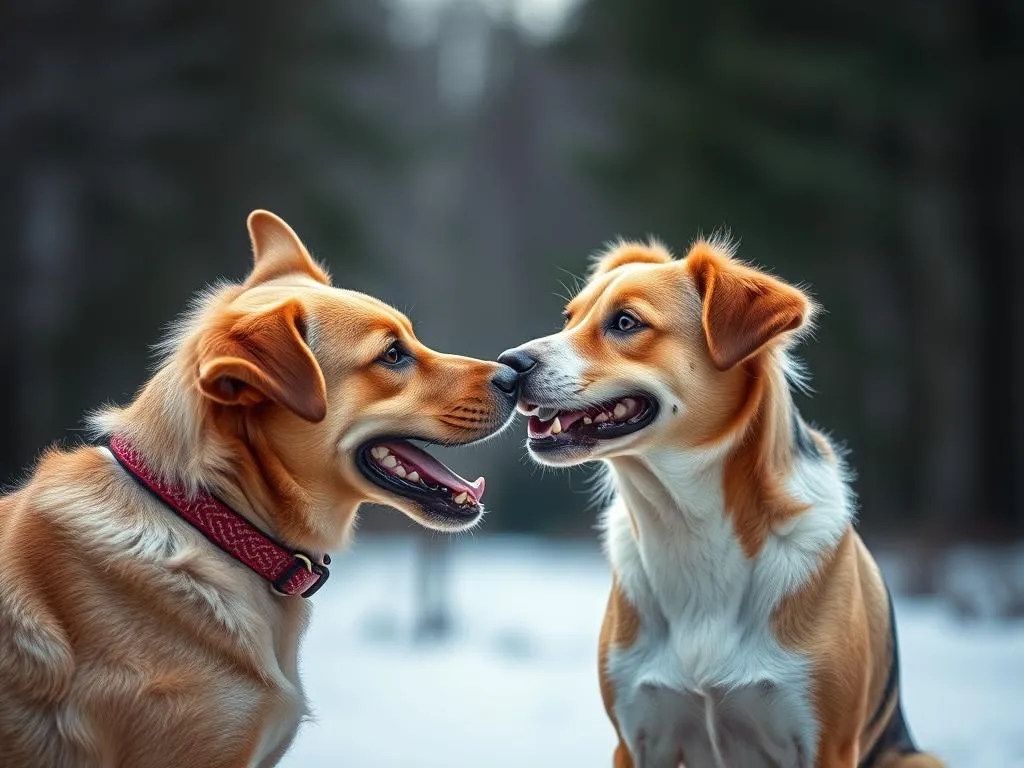
Introduction
As a dog owner, you might have noticed that training one dog can be a challenge, so imagine the complexity when you have two! In fact, statistics show that approximately 60% of dog owners report difficulties in managing their pets’ behavior during training sessions. Training two dogs at once can seem daunting, but it also opens the door to a rewarding experience that can strengthen the bond between you and your furry friends.
Training your dogs is essential for fostering good behavior, ensuring safety, and enhancing their overall quality of life. When done correctly, training two dogs at once can lead to a harmonious home environment and even save you time in the long run. In this guide, you’ll discover effective strategies, tips, and techniques that will help you successfully train both dogs simultaneously, along with insights into common challenges you may face.
Understanding the Basics of Dog Training
Key Principles of Dog Training
Before diving into the specifics of training two dogs, it’s crucial to understand the fundamental principles of dog training:
-
Positive Reinforcement: This method involves rewarding your dogs for good behavior rather than punishing them for bad behavior. Treats, praise, or playtime can all serve as effective rewards.
-
Consistency and Patience: Dogs thrive on routine and predictability. Consistent commands, cues, and rewards will help reinforce their learning. Patience is key; remember that every dog learns at their own pace.
-
Understanding Canine Behavior: A solid grasp of dog behavior can help you communicate effectively with your pets. Recognizing signs of stress, excitement, or distraction in each dog will enable you to adapt your training methods accordingly.
Why Training Two Dogs is Different
Training two dogs simultaneously presents unique challenges and dynamics:
-
Group Dynamics and Social Behavior: Dogs are social animals, and their interactions with each other can influence their learning. They may become distracted by one another or exhibit competitive behavior during training.
-
Potential for Distraction: When training two dogs, distractions can come not only from the environment but also from each other. It’s essential to keep both dogs engaged and focused on the task at hand.
-
Coordinating Individual Needs: Each dog has its own personality, energy level, and learning style. Tailoring your approach to meet the individual needs of each dog is crucial for successful training.
Preparing for Dual Dog Training
Assessing Each Dog’s Personality
Understanding the unique traits of each dog is the first step in effective training:
-
Differences in Temperament: One dog may be more eager to please, while the other could be more independent or stubborn. Assessing their personalities will help you devise appropriate training strategies.
-
Energy Levels and Play Styles: High-energy dogs may require more vigorous training sessions, while calmer dogs might benefit from a more relaxed pace. Tailoring your training plan to their energy levels will enhance learning and minimize frustration.
Choosing the Right Training Environment
The environment plays a significant role in training success:
-
Distraction-Free Zones: Select a quiet area for training sessions where distractions are minimal. This could be indoors or a secluded outdoor space.
-
Safe Spaces for Training Sessions: Ensure the area is safe and secure for both dogs, preventing any potential escapes or conflicts during training.
Gathering Necessary Supplies
Preparation is key to smooth training sessions:
-
Leashes, Collars, Treats, and Training Tools: Make sure you have all the necessary equipment on hand. Consider using dual leashes or training collars that allow you to manage both dogs effectively.
-
Considerations for Group Training Equipment: You may want to invest in additional training aids, like clickers or treat pouches, to facilitate your sessions.
Training Techniques for Two Dogs
Basic Commands
Starting with basic commands is essential for laying the foundation of training:
-
Teaching Commands Like “Sit,” “Stay,” and “Come”: Begin with one command at a time. Use positive reinforcement for both dogs when they follow your cues.
-
Simultaneous Commands vs. Taking Turns: You might find it beneficial to teach commands simultaneously or take turns, depending on how well both dogs respond. If one dog is more distracted, focus on them first before engaging the other.
Leash Training
Leash training is crucial for walking two dogs together:
-
Techniques for Walking Two Dogs Together: Start with both dogs on a leash in a controlled environment. Practice walking them side by side and rewarding them for maintaining a loose leash.
-
Managing Pulling and Distractions: If one dog tends to pull, consider using a harness or training collar that helps control pulling. If distractions arise, stop walking and redirect their attention back to you.
Specialized Commands
Teaching specialized commands can enhance control during group training:
-
Teaching Dogs to Respond to Individual Names: This is particularly useful when you want to give commands to one dog without confusing the other. Use each dog’s name consistently before issuing commands.
-
Commands for Group Behavior Control (e.g., “Leave It”): Establishing commands that apply to both dogs can help manage their interactions, especially if they tend to get overly excited or distracted by each other.
Addressing Common Challenges
Distractions and Focus Issues
Keeping both dogs focused during training can be a challenge:
-
Strategies to Keep Both Dogs Focused: Use high-value treats to capture their attention. Consider training in short, engaging bursts to maintain their interest.
-
Using Treats and Toys Effectively: Rotate treats and toys to keep things fresh. You can also use a toy as a reward for successful training sessions, letting them play together after a job well done.
Competition for Attention and Resources
Ensuring both dogs feel valued is vital:
-
Ensuring Fair Distribution of Treats and Praise: Distribute treats and praise evenly, so each dog feels equally appreciated. This helps prevent jealousy from arising during training.
-
Techniques to Avoid Jealousy or Rivalry: Establish a routine where both dogs receive individual training time, ensuring they both get the attention they need.
Behavioral Problems
Behavioral issues may arise when training two dogs:
-
Identifying and Addressing Issues: Pay attention to signs of stress or aggression during training. If one dog is acting out, take a break and reassess the situation before continuing.
-
When to Seek Professional Help: If behavioral problems persist, consider seeking guidance from a professional dog trainer who specializes in dual dog training.
Advanced Training Techniques
Group Training Sessions
Participating in group classes can be beneficial:
-
Benefits of Group Classes vs. Solo Training: Group classes provide socialization opportunities and expert guidance. Dogs can learn from each other, and you’ll gain insights from observing other owners.
-
Finding the Right Class for Two Dogs: Look for classes that cater to multiple dogs or focus on group behavior. Ensure the trainer has experience with dual dog training.
Incorporating Games and Fun Activities
Games can make training enjoyable:
-
Fun Training Exercises That Involve Both Dogs: Activities like fetch, agility courses, or hide-and-seek can reinforce commands while keeping both dogs engaged.
-
Tips for Using Play as a Training Tool: Incorporate play into your training sessions as a reward, reinforcing positive behavior while allowing them to have fun together.
Socialization Strategies
Socialization is essential for well-rounded dogs:
-
Importance of Socializing Both Dogs Together: Encourage positive interactions with other dogs and people to build confidence and reduce anxiety.
-
Safe Ways to Introduce New Environments and Other Dogs: Start small by introducing your dogs to new locations or other dogs gradually. Monitor their behavior and ensure they feel comfortable at each step.
Maintaining Progress and Continuing Education
Setting Realistic Goals
Establishing clear goals is crucial for progress:
-
Establishing Training Milestones for Each Dog: Define specific objectives for each dog based on their individual needs. This can help you track their growth and celebrate successes.
-
Tracking Progress Effectively: Keep a training journal to note improvements, challenges, and successful strategies for future reference.
Continuous Reinforcement
Training doesn’t stop once basic commands are learned:
-
Importance of Ongoing Training Beyond Initial Commands: Regularly practice commands and introduce new ones to keep your dogs engaged and mentally stimulated.
-
Ideas for Incorporating Training into Daily Routines: Integrate training into everyday activities, like during walks or playtime, to reinforce learning in real-life situations.
Resources for Further Learning
Continual learning can enhance your training skills:
-
Recommended Books, Websites, and Trainers: Explore literature and online resources focused on dog behavior and training techniques to broaden your understanding.
-
Online Courses or Local Classes for Advanced Training: Consider enrolling in advanced training courses to deepen your knowledge and refine your skills.
Conclusion
Successfully navigating the journey of training two dogs at once requires understanding, patience, and adaptability. By employing effective techniques, addressing challenges, and maintaining a consistent training routine, you can foster a harmonious relationship with both of your furry companions. Remember that each dog is unique, and adapting your approach to their individual needs will lead to the best results.
As you embark on this training journey, celebrate small victories and enjoy the process of learning together with your dogs. With dedication and love, you can create a well-trained, happy household where both dogs thrive.
FAQs
-
Can I train two dogs together, or should I train them separately?
Training two dogs together can be effective, but it may require more attention and management. Individual training sessions can also help address specific needs. -
What should I do if my dogs start fighting during training?
If fights occur, separate the dogs immediately and assess the situation. Consult a professional trainer if conflicts persist. -
How do I handle training different age dogs?
Adjust your training techniques based on each dog’s age and energy level. Young dogs may need more physical activity, while older dogs may benefit from lower-intensity training. -
What are some quick tips for successful dual dog training?
Maintain consistency, use high-value rewards, and ensure each dog feels valued in the training process. Keep sessions short and engaging to hold their attention.
By understanding the nuances of training two dogs at once, you can help create a well-behaved and joyful environment for both you and your pets.









